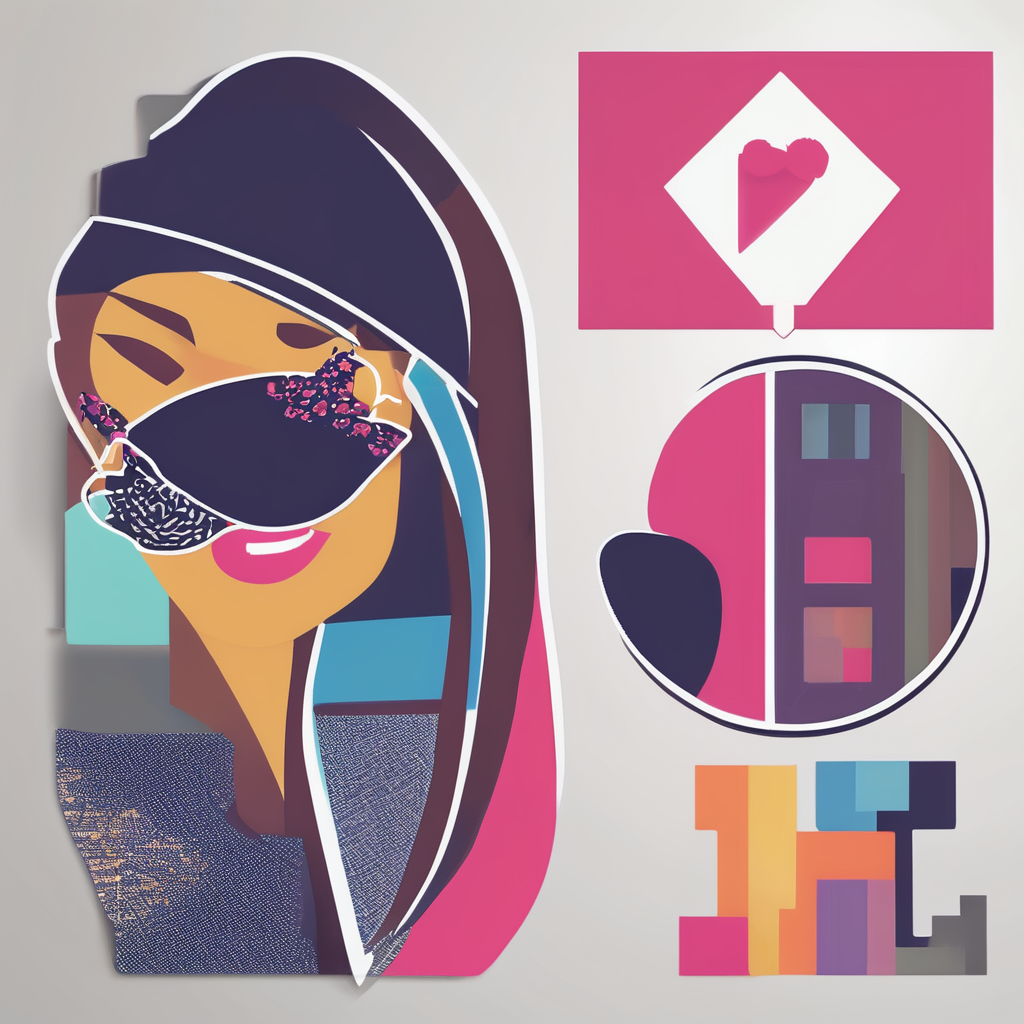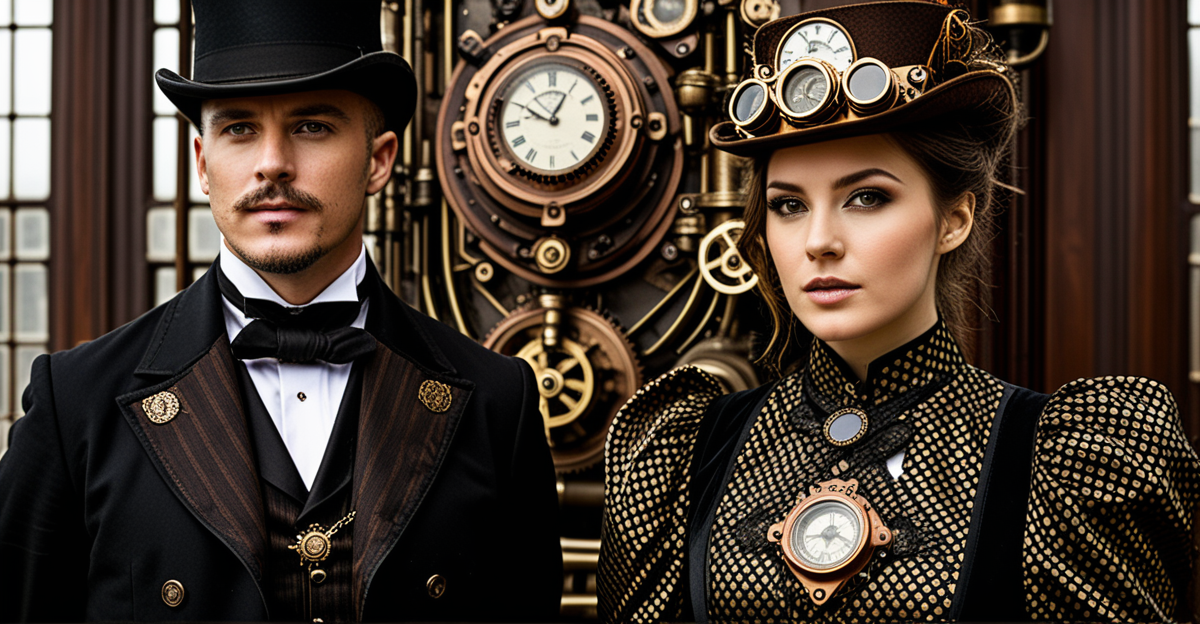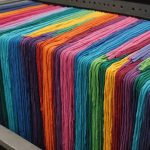Steampunk fashion blends Victorian elegance with imaginative industrial design, creating a striking, timeless style. Rooted in 19th-century aesthetics and futuristic fantasy, it invites creativity and self-expression across all ages and backgrounds. Whether for cosplay, everyday wear, or artistic projects, this unique fusion offers endless inspiration, uniting history and innovation in a way that constantly evolves with modern trends.
What is Steampunk? Essential Definition, Origins, and Core Elements
Steampunk is a subgenre of science fiction that blends Victorian-era fashion and retro-futuristic technology powered by steam rather than electricity. Historically, the term was humorously coined in 1987 by author K. W. Jeter to describe stories featuring speculative, steam-powered technology in Victorian settings. On this page, on the site Steampunkfashion you’ll discover the foundational elements of steampunk culture—where clockwork mechanisms, airships, and industrial-era style converge—serving as both a resource and inspiration for enthusiasts and newcomers.
Additional reading : Ultimate guide to choosing the ideal hat for windy uk days: style meets practicality
At its core, steampunk imagines a parallel past where the inventive spirit of the Industrial Revolution never faded. This vision draws from classic authors like Jules Verne and H.G. Wells, whose stories of fantastical machines and alternate histories helped shape the genre. Fashion and art utilize brass and copper materials, goggles and eyewear, as well as signature accessories like pocket watches and mechanized gear motifs.
Steampunk’s reach extends far beyond literature, influencing video games, movies, and contemporary cosplay. The style welcomes diverse interpretations, from elegant Victorian-inspired attire to adventurous gadgets, making it especially popular at festivals and themed gatherings. The genre’s adaptability ensures its strong presence in modern creative culture.
Topic to read : Shop distinctive victorian-inspired steampunk fashion collections
Hallmarks of Steampunk Style: Fashion, Accessories, and Iconic Visuals
Steampunk style blends Victorian clothing foundations with inventive, mechanical flourishes. The most recognizable pieces are corsets, often decorated with visible gears and detailed stitching, and waistcoats made from heavy fabrics or even reinforced with metals like brass. Top hats and goggles quickly signal steampunk when paired with long coats, layered vests, and swooping skirts. These essentials set the tone, whether you gravitate to formal, Gothic, or even Western-influenced looks.
Notable materials include brass and copper, chosen for their warm tones and industrial feel. Accessories often feature exposed gears, clockwork motifs, and mechanical parts, displayed on everything from leather belts to pocket watches. The motif of wearable mechanical gadgets and devices—like steam-powered jewelry or retrofuturistic eyewear—amplifies the sense of fantasy-meets-history.
Building a steampunk wardrobe means starting with basic Victorian garments. Introduce dramatic accessories—goggles, gear-embellished hats, utility pouches, and clockwork devices—to personalize the ensemble. Exploring substyles like Gothic or Lolita within steampunk lets you express individual flair. Adaptation and creativity are at the heart of this fashion movement, where the only rule is a seamless merge of past elegance and mechanical imagination.
Steampunk in Media: Literature, Film, Gaming, and Art
Steampunk literature and fiction stands at the genre’s core. Key texts such as The Difference Engine by Gibson and Sterling present advanced steam-powered computers in a Victorian landscape, fusing history and imagination. Jules Verne and H.G. Wells, often credited as early influences, filled their stories with fantastic machinery—submarines, time machines, and airships—foundational icons in later works.
In visual storytelling, steampunk in movies and anime evolved rapidly. The 1954 adaptation of Verne’s 20,000 Leagues Under the Sea set a defining visual template loaded with ornate brass and fantastical tech. Esteemed directors like Hayao Miyazaki have deepened the genre’s reach: Howl’s Moving Castle and Castle in the Sky depict airships and mechanized wonders that have become genre staples. While blockbuster attempts like Mortal Engines demonstrate the risks of big-budget steampunk, their inventiveness is hard to ignore.
The impact of steampunk video games is equally notable. Dishonored and BioShock Infinite envelop players in rich, retro-futuristic worlds filled with gadgets, clockwork mechanisms, and Victorian-inspired costumes. Frostpunk provides a harsh survival tale in a frozen, steam-powered city.
Steampunk also inspires artists, cosplayers, and themed event creators. From intricate sculptures and digital paintings to hand-crafted costumes layered with gear motifs and leather, expression is boundless. Extensive gatherings and costumed festivals—where enthusiasts proudly display wearable art—keep the genre innovatively alive.
Community, Creativity, and Evolving Steampunk Trends
Steampunk gatherings and festivals: UK events, global conventions, and workshops
Precision: Community-driven events, such as UK steampunk festivals and worldwide conventions, act as vibrant hubs for creativity and connection in the genre.
Enthusiasts attend annual meetups ranging from Weekend at the Asylum in Lincoln—boasting immersive parades and elaborate costumes—to international conventions that host art installations and lectures. Workshops at these gatherings introduce techniques for crafting and upcycling vintage items, blending education with interactive fun. Such events are not exclusive to the UK; worldwide, fans organize fairs that celebrate the fusion of Victorian-inspired fashion and retro-futuristic technology.
DIY crafting culture: Building costumes, upcycling vintage items, and creating props
Recall: The heart of the movement thrives on DIY costume ideas and hands-on projects using both modern and reclaimed materials.
Crafters frequently modify top hats, goggles, and jewelry, incorporating mechanical motifs—cogs, gears, watches—reflecting both historic accuracy and creative flair. Popular props include steam-powered gadgets and fantasy-inspired weapons, typically fashioned from brass or leather remnants. This approach encourages self-expression while supporting sustainability.
Continued evolution: Intersection with post-apocalyptic, gothic, and fantasy trends; influence on modern fashion and lifestyle
The genre expands by melding fantasy, gothic, and post-apocalyptic influences. Modern steampunk aesthetics surface in home decor and everyday outfits, blending old-world elegance with avant-garde ideas. Experimentation with materials such as wood, leather, and polished metal keeps the movement fresh, inspiring an ever-expanding community passionate about both style and innovation.











